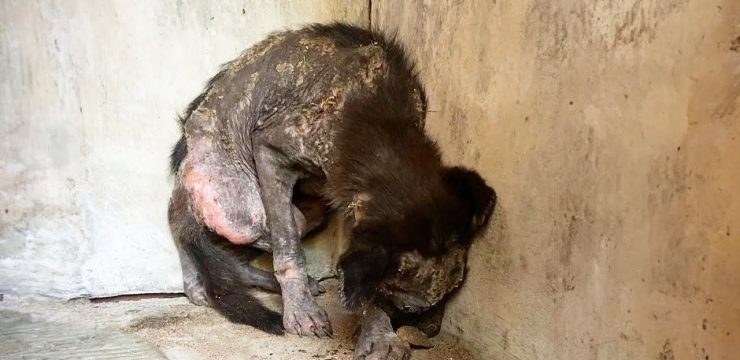If you’re anything like me, you’re probably in the habit of checking your body regularly for anything unusual—lumps, bumps, bruises, or anything that seems out of place. Some people might call that being overly cautious or even a little paranoid, but I prefer to think of it as being mindful and proactive. I believe it’s important to stay in tune with your body and be prepared to seek professional medical advice if you notice something unexpected or unexplained.

So, imagine my surprise when one morning I noticed a small cluster of red dots on my shoulder. They weren’t itchy or painful, but they were definitely new. Naturally, my curiosity (and concern) led me straight to the internet to find out what they might be. As it turns out, red dots on the skin are more common than you might think, and they can stem from a variety of causes—ranging from completely harmless to more serious underlying conditions.
To help others who may one day find themselves in a similar situation, I’ve put together a comprehensive breakdown of what red dots on the skin could mean. While these explanations cover many common causes, it’s important to remember that only a qualified healthcare provider can offer a definitive diagnosis.
Red dots on the skin can appear in many different shapes, sizes, and shades of red. Some are flat, others raised. Some cause discomfort, while others are completely painless. What they represent can vary just as widely—from minor skin irritations to indicators of more serious health issues.
One common cause is a condition known as petechiae or purpura. These are tiny red or purple spots that appear when small blood vessels or capillaries break and bleed under the skin. The causes can include anything from physical strain, like intense coughing or vomiting, to certain medications. Often, these spots are harmless and resolve on their own, but in some cases, they may point to an underlying medical issue such as a platelet disorder or another blood-related condition.
Another relatively harmless but noticeable cause is cherry angiomas. These are small, bright red, raised bumps that form due to an overgrowth of blood vessels in the skin. They’re typically found on the torso, arms, or shoulders and tend to increase in number as we age. Though they might look concerning, they’re generally benign and don’t require treatment unless they’re causing discomfort or you want them removed for cosmetic reasons.
Heat rash is another common explanation, especially in hot or humid environments. This occurs when sweat becomes trapped in blocked sweat ducts, leading to a pattern of red, itchy dots that often cluster together. While heat rash can be uncomfortable, it usually clears up on its own once the skin cools down and airflow improves.
Allergic reactions can also manifest as red dots or patches on the skin. These reactions can be caused by a wide variety of triggers, including foods, medications, cleaning products, or insect bites. In these cases, the red dots may be part of a larger rash and are often accompanied by itching or swelling. Antihistamines and avoiding the trigger are typically effective solutions, though severe allergic reactions should be treated as medical emergencies.
Another skin condition to be aware of is folliculitis, which involves the inflammation of hair follicles. This usually happens due to bacterial or fungal infections, and it appears as small, red, sometimes pus-filled bumps that resemble acne. Folliculitis can be mildly uncomfortable and is often treated with topical or oral antibiotics or antifungal medications.
More serious bacterial infections such as cellulitis can also lead to red, swollen, warm patches on the skin. Unlike some of the other conditions mentioned, cellulitis usually requires prompt medical treatment. If left untreated, it can spread and become more severe. Symptoms to watch for include tenderness, swelling, fever, and a rapidly expanding area of redness.
Similarly, impetigo is a contagious bacterial skin infection that is especially common in children but can affect adults as well. It’s characterized by red sores that eventually burst, ooze fluid, and develop a yellowish-brown crust. While impetigo is not typically dangerous, it does require antibiotic treatment and good hygiene to prevent spreading.
A more complex condition is vasculitis, which involves inflammation of blood vessels. This can cause red spots or patches on the skin and may be associated with autoimmune disorders or infections. Depending on its severity, vasculitis might require specialized treatment and long-term monitoring.
Then there are hemangiomas, which are non-cancerous growths of blood vessels often present at birth or developing in infancy. These can appear as red dots or raised areas and are commonly referred to as “strawberry marks.” While most hemangiomas resolve on their own over time, some may require medical intervention if they grow too quickly or interfere with vital functions.
In many cases, the presence of red dots on the skin is nothing to worry about. They can come and go without causing any long-term harm. However, there are instances where seeing a doctor is absolutely the right course of action. For example, if the red dots are accompanied by symptoms like fever, pain, or other signs of infection, it’s best to get checked out. Similarly, if the dots suddenly increase in size, number, or intensity, or if they’re paired with symptoms like fatigue, weakness, or dizziness, it’s a smart move to seek medical advice promptly.
The bottom line is that our skin often reflects what’s happening inside our bodies, and while red dots are frequently benign, they can sometimes be clues to more serious conditions. So don’t ignore them. Pay attention, stay informed, and never hesitate to consult with a healthcare professional if you’re unsure.
After all, when it comes to your health, it’s always better to be safe than sorry.





